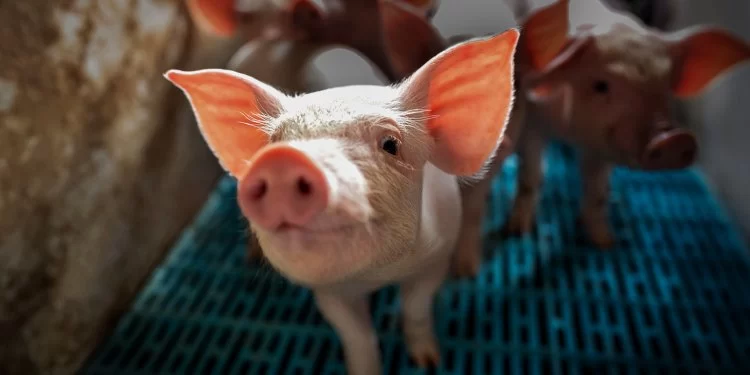
- growing-public-awareness-drives-policy-changes - Growing Public Awareness Drives Policy Changes
- federal-animal-welfare-legislation-in-the-united-states - Federal Animal Welfare Legislation in the United States
- state-level-innovations-and-progressive-reforms - State-Level Innovations and Progressive Reforms
- international-developments-in-animal-protection-laws - International Developments in Animal Protection Laws
- landmark-cases-that-shape-animal-welfare-policies - Landmark Cases That Shape Animal Welfare Policies
- challenges-to-enforcement-and-loopholes-in-the-law - Challenges to Enforcement and Loopholes in the Law
- legal-guidance-and-the-road-ahead-for-animal-rights - Legal Guidance and the Road Ahead for Animal Rights
1. Growing Public Awareness Drives Policy Changes
Over the last decade, animal welfare legislative developments have gained traction globally, largely due to rising public consciousness about animal rights. Social media has played a vital role in exposing cruelty in factory farms, entertainment industries, and illegal wildlife trade, forcing legislators to respond. Campaigns such as #BanFur and #AdoptDontShop have gone viral, mobilizing young voters and reshaping how policymakers approach animal protection laws.
In the U.S., surveys by Gallup and Pew Research show that a growing percentage of citizens—especially Millennials and Gen Z—believe animals deserve more legal protection. This public sentiment has driven a noticeable increase in animal welfare bills introduced at both state and federal levels. As consumer ethics evolve, so too does the legal framework around animal care, cruelty prevention, and ownership accountability.
2. Federal Animal Welfare Legislation in the United States
2.1 The Animal Welfare Act and Its Amendments
The Animal Welfare Act (AWA), first passed in 1966, remains the cornerstone of federal animal protection in the U.S. It regulates the treatment of animals in research, exhibition, transport, and by dealers. However, the AWA excludes significant groups such as farm animals, birds, and reptiles. Recent legislative updates have aimed to narrow these gaps. The 2020 amendment known as the "Preventing Animal Cruelty and Torture (PACT) Act" made certain acts of animal cruelty federal crimes for the first time in history.
2.2 Key Legislative Proposals on the Table
Ongoing proposals such as the Farm System Reform Act and the Puppy Protection Act seek to further tighten regulations. These bills aim to restrict large-scale animal breeding operations and strengthen inspection protocols for facilities covered under the AWA. Though not yet law, their bipartisan sponsorship signals a shift in congressional attitudes. Law firms like ESPLawyers monitor these proposals to advise clients involved in industries affected by animal welfare standards.
3. State-Level Innovations and Progressive Reforms
3.1 California as a National Leader
California has pioneered several landmark reforms. Proposition 12, passed in 2018 and upheld in 2023 by the U.S. Supreme Court, mandates minimum space requirements for pigs, chickens, and veal calves. Retailers are banned from selling meat or eggs from producers not meeting these standards. This law effectively influences out-of-state farming practices due to California’s large consumer market.
3.2 Other Notable State Actions
Massachusetts, Oregon, and Washington have passed similar animal confinement laws. Meanwhile, New Jersey recently passed legislation banning the sale of cosmetic products tested on animals. These state-level moves often lead to national ripple effects, encouraging private industries to preemptively update practices to avoid legal risks and public backlash.
4. International Developments in Animal Protection Laws
4.1 Europe Leads in Legislative Ambition
The European Union (EU) has long been a leader in animal welfare policy. The 2021 EU Animal Welfare Strategy proposes a full phase-out of caged animal farming by 2027 and promotes animal-friendly labeling systems. Countries like Germany, the Netherlands, and Sweden already enforce strict transport and slaughter regulations.
4.2 Asia and Latin America on the Rise
In Asia, Taiwan and South Korea have toughened anti-cruelty laws, while India recognizes animals as “sentient beings” under its constitution. Chile and Argentina are also adopting stronger frameworks, particularly against exotic pet trade and circuses. The globalization of the animal welfare movement suggests that legislative reform is not just a Western trend—it’s becoming a global legal evolution.
5. Landmark Cases That Shape Animal Welfare Policies
5.1 The Happy the Elephant Case
In 2022, New York’s highest court ruled that Happy, an elephant living in the Bronx Zoo, is not legally a person and therefore not entitled to habeas corpus relief. Though the court ruled against the animal rights petition, the case sparked national debate about personhood for intelligent non-human animals and may inspire future legal interpretations.
5.2 Legal Victories in Factory Farm Exposure
Whistleblower cases exposing cruelty in large-scale poultry and hog farms have led to fines, company shutdowns, and new auditing policies. In several instances, courts have supported journalists and activists prosecuted under “ag-gag” laws, ruling such laws as unconstitutional restrictions on free speech.
Such cases not only shape public opinion but also push legislators to reevaluate the strength and scope of current animal welfare statutes.
6. Challenges to Enforcement and Loopholes in the Law
6.1 Understaffing and Budget Constraints
Despite growing legislation, enforcement remains uneven. The USDA has faced criticism for under-enforcing the AWA due to limited staffing and funding. Some facilities go years without inspection. Without penalties and oversight, legal protections remain aspirational rather than actionable.
6.2 Ambiguities and Exemptions
Many laws contain ambiguous language or broad exemptions—particularly for agricultural practices deemed “standard.” For example, tail docking and debeaking are still legal under most animal cruelty statutes. These gaps leave millions of animals vulnerable and complicate prosecution efforts.
Legal experts at ESPLawyers advise NGOs and whistleblowers on how to structure compelling cases despite these limitations, often using video evidence and expert testimony to close the enforcement gap.
7. Legal Guidance and the Road Ahead for Animal Rights
7.1 The Role of Legal Professionals in Advocacy
Lawyers play a key role in the future of animal welfare—whether drafting legislation, challenging unjust laws, or representing advocacy groups in court. A growing number of law schools now offer animal law courses, and firms like ESPLawyers specialize in helping clients navigate the increasingly complex legal terrain of animal welfare.
7.2 The Future: Rights-Based vs. Welfare-Based Frameworks
There is a growing debate between the “welfare-based” approach, which aims to improve conditions for animals, and the “rights-based” approach, which argues animals deserve legal personhood in specific contexts. As technology improves and public empathy grows, we may see hybrid models emerge—where animals are granted limited legal rights based on cognitive abilities, similar to children or incapacitated adults.
Animal welfare legislative developments are not just about policy—they’re about society’s evolving ethics. As the law begins to reflect these shifting values, staying informed and involved becomes not only a legal interest but a moral responsibility. For those looking to take meaningful action—whether through corporate compliance or individual advocacy—partnering with experienced legal professionals can make the difference between intention and impact.








